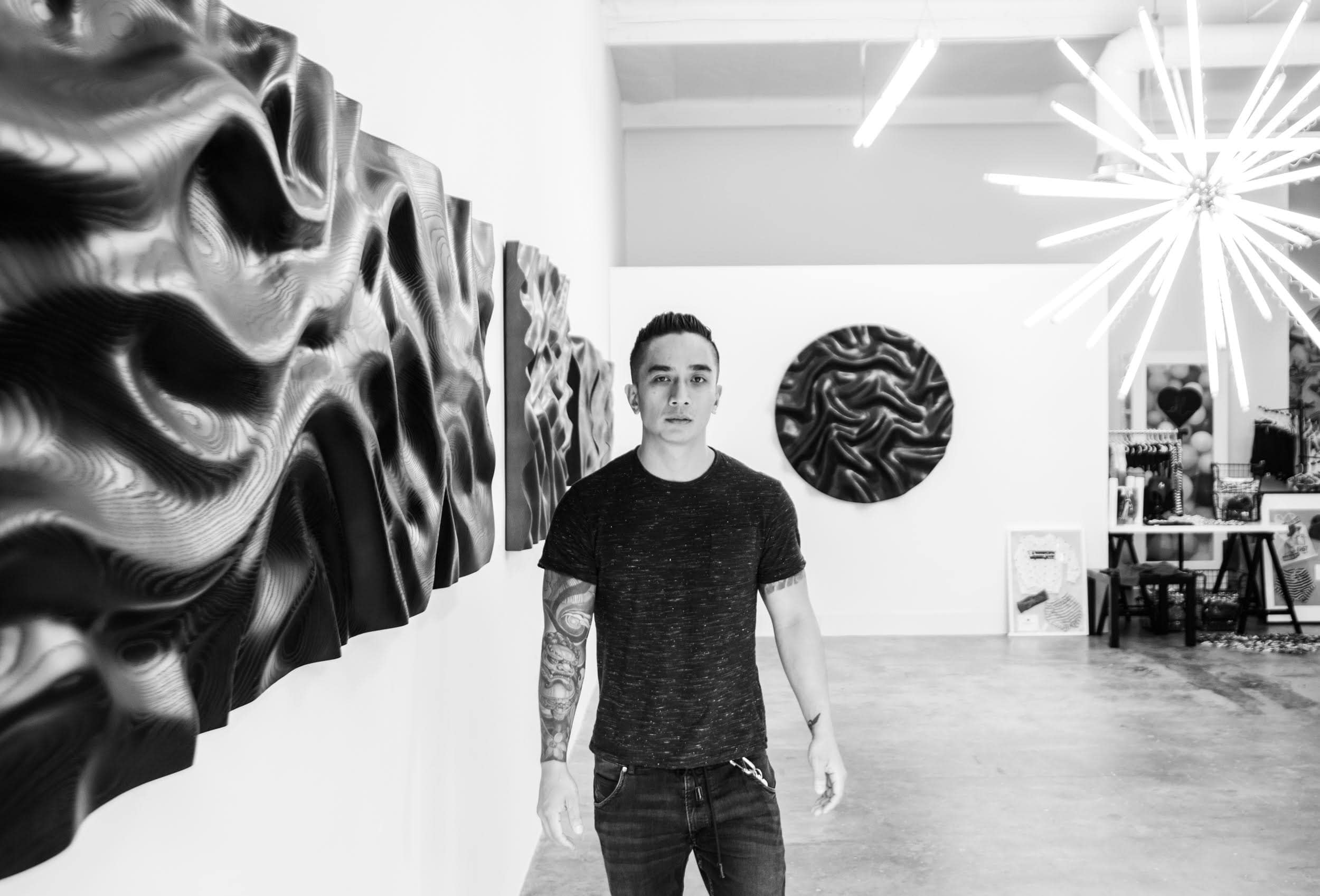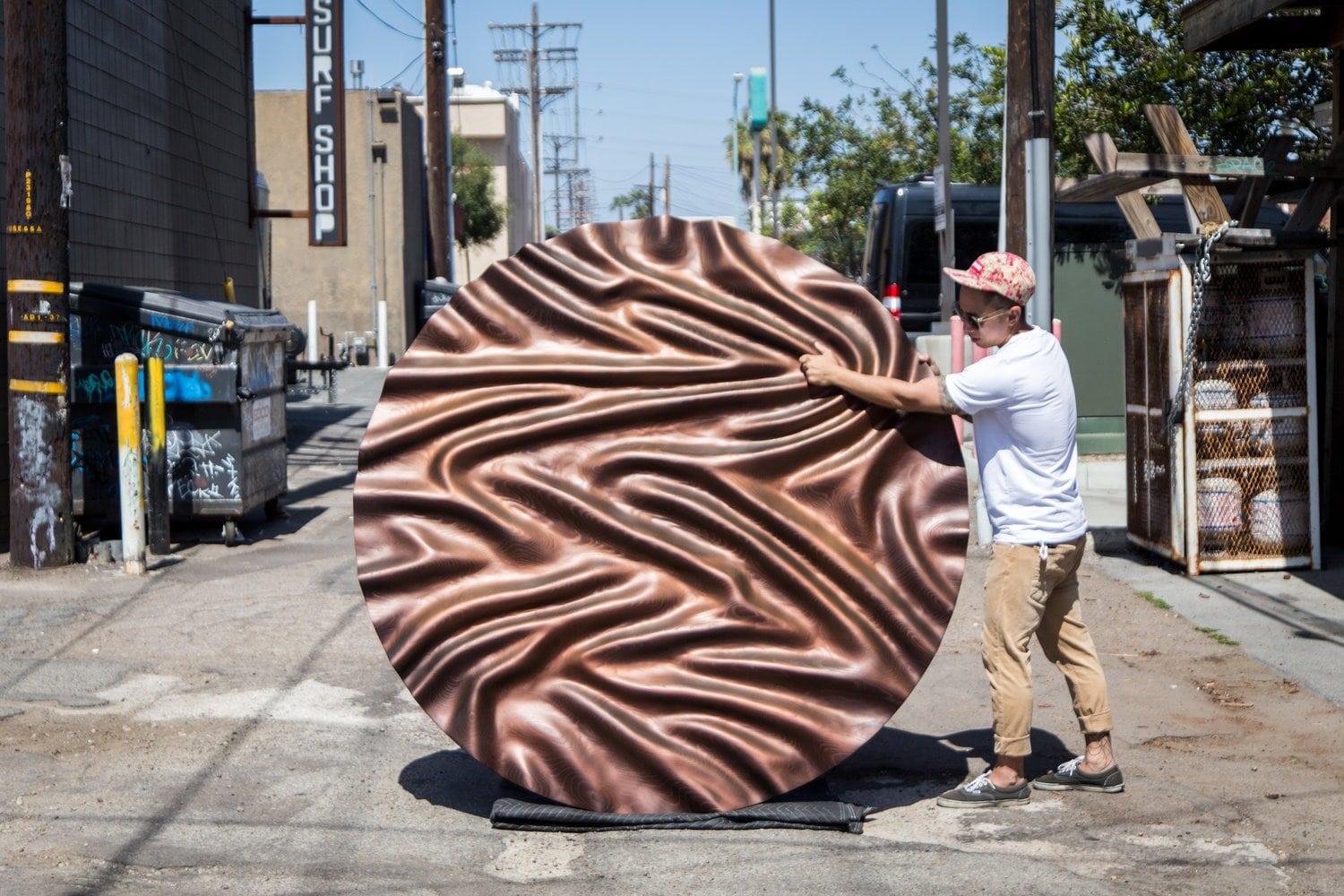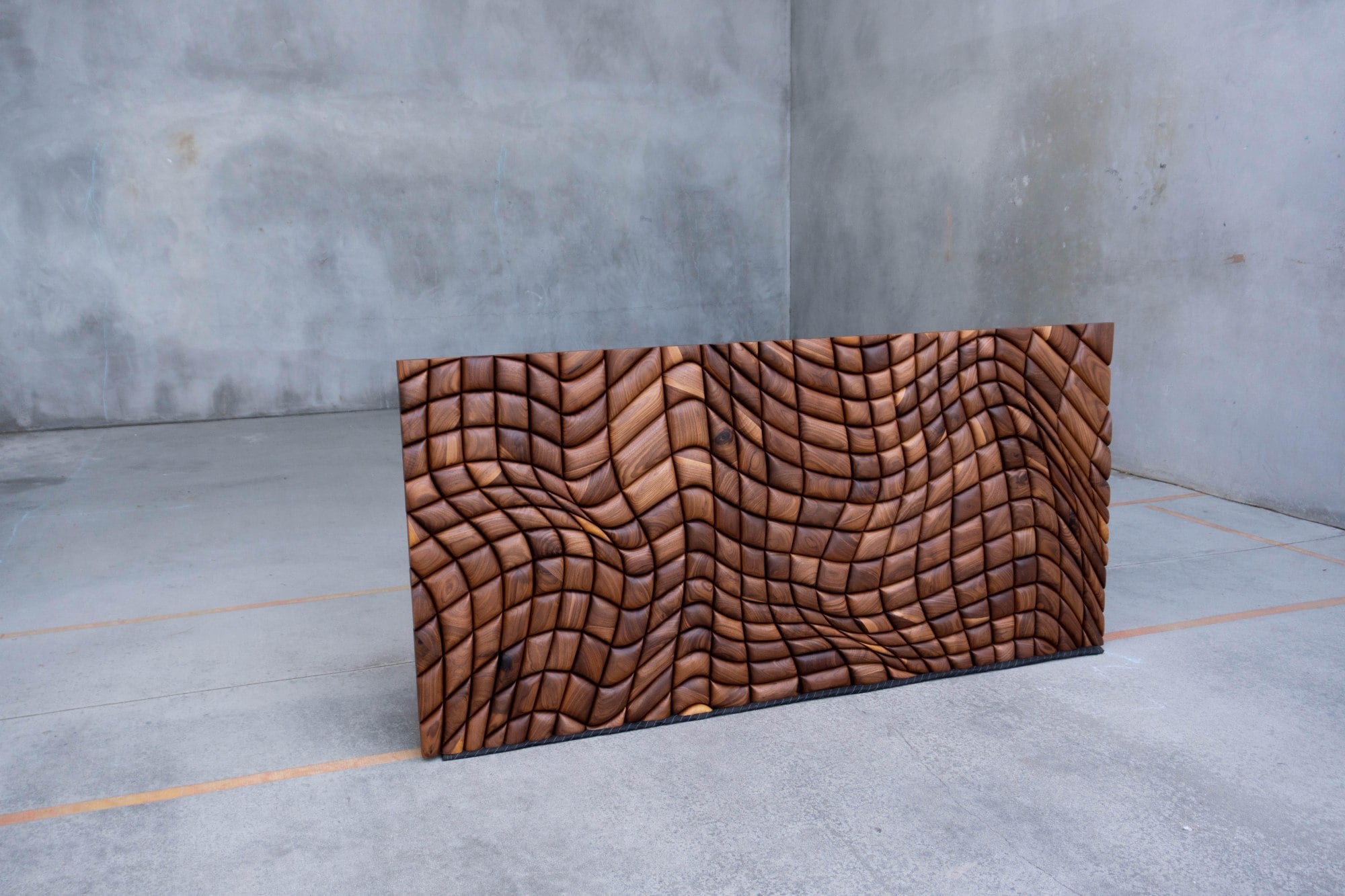The use of wood for art goes back to prehistoric times when people solely relied on what was easily available in nature to create sculptures and crafts. In fact, Shigir Idol — a unique, nine-foot-tall totem pole depicting eight ‘human faces’ considered to be the oldest surviving wooden artifact — is twice as old as Stonehenge and the pyramids of Egypt.
Wood has always been an essential part of traditional arts, both as a tool and the art itself. Being easily available and structurally durable, wood offers artists a medium to play their imaginations on, and an avenue for unrestrained creativity. But while wood’s natural quality makes it an interesting material, it also poses challenges. Because it's organic, it can rot and get damaged by insects and pests. Not to mention the skills and technique it requires to create a real masterpiece out of it.
Vietnamese American artist Dan “Nuge” Nguyen is willing to take the challenge. The California-based wood artist finds “beauty to being able to produce something heartfelt” with his hands, with the wood he works on every single day of his life in the last six years.

“I joined a woodshop while I was living in San Diego with original aspirations to make high-end furniture,” said Nuge, a son of Vietnamese immigrants. “The more that I got my feet wet learning how to work with wood, the more my interests gravitated towards making pieces that were strictly art.”
Originally an Architecture graduate, Nuge wasn’t too thrilled sitting in front of a computer drawing construction documents, which, he said, was sharply different from the intensive, creative process his architectural studies promised.
His journey with wood evolved from cutting boards to coffee tables and countertops to clocks and finally to sculptures. There was freedom in making art he could call his; every part of it — from conception to production to the final product — was his, all his.
It was a year and a half of making cutting boards in the evenings after work at the architecture firm that Nuge got laid off from his job. But what was supposed to be a devastating phase turned into an opportunity to carve a new path.
“I gave myself a six-month ultimatum to start making things happen. If things didn’t look good within six months, then I would simply apply for another job in architecture.”

It has been almost six years and Nuge hasn’t looked back. Now at 34, he’s considered one of the brightest wood artists in San Diego (he’s got 238,000 followers on Instagram!), creating masterpiece after masterpiece with his bare hands and lumber he sources from the Southern California region.
In this conversation with Vietcetera, Nuge takes us on a journey to the art that’s both a “rebellion” to his architectural background and the energy that fills his soul.
How and when did you decide to turn your craft into a business?
After getting laid off from my job in architecture, I knew that I really wanted to build my own career with my artwork because I had experienced how little I felt passionate about life in architecture. The gratifying feeling of working with my hands and feeling ownership over my work was something I wanted to replicate for an entire lifetime.
Can you walk us through the whole process of your wood sculptures — from design conceptualization to the final touches?
My pieces can take anywhere from a few weeks to a handful of months to create. For my typical single-panel carvings that are fabric-inspired, I always start the process by pushing a piece of fabric around on a board. This helps me visualize how the overall flow of the piece is going to look. Once I get the feel that I like, I pin and glue it down to the board. This fabric then becomes my template for my carving. I reference this the same way a painter might reference a photograph.
Before the actual carving starts, there is a good amount of prep work that needs to be done beforehand. My carvings are done on panels that are comprised of various pieces of lumber that have been milled and glued together to give the impression that the entire panel is one large piece of wood. The grain blends in together very well and can be difficult to find the seams at times.

I transfer the fabric template onto the wood panel by drawing a grid on both pieces so I can figure out where the peaks and valleys are supposed to be placed. From there, I go through a couple of rounds of power carving using a grinder with different attachments. The chainsaw disc helps me give shape to the piece quickly and allows me to make a ton of quick decisions on the fly. The burr disc attachment allows me to massage the form into place and work on the subtle details that really give the piece its elegance.
Followed by the carving are three rounds of sanding that get it silky smooth. From there I dye the piece black and seal it prior to spraying it with automotive paint. This last part with the paint might vary depending on the desired finish, but lately, I’ve been loving how my pieces look with automotive paint.
Where do you get design inspiration from?
My inspiration comes from everywhere. I find a lot of organic and geometric forms in nature to be very inspiring in my work. But even seeing other artists in different mediums inspire me. I really love seeing what painters and graffiti artists create. The forms that they create and their use of colors aren’t something you see with people who work with wood.

Who do you sell your works to?
I sell to all sorts of people. I sell work to avid collectors, corporate spaces, and the average person who just really wants to own one of my pieces. I make direct sales straight from my studio but I also work with various galleries that champion my work. They are located in San Diego, Miami, Whistler BC, and Singapore. My general price range is between $7,000 and $25,000.

Which of your works do you take the most pride in?
I always take the most pride in the latest piece I’m working on. I’m a firm believer that I am only as good at the last piece I produce. I think that the general rule of thumb always pushes me to elevate my craft with every piece I create. I constantly push myself out of my comfort zone to which is a feeling I have come accustomed to.
Does your Vietnamese heritage have an impact on your work?
My Vietnamese heritage has everything to do with my work. Coming from an immigrant family in the US, I always felt like my mission to create a legacy for my family was bigger than myself. My parents had risked their lives to give my sister and me opportunities that they didn’t have. I didn’t want to squander their efforts in gifting us this life, so creating a legacy to carry on the family name has always been the foundation in everything I do.

What’s the best and most challenging part of making this art?
There are two parts of the process that are extremely exhilarating for me. The first part is the conceptualization. Whenever an idea hits me, I get filled with an adrenaline rush and have to walk around to burn off my energy. The second part is when a client receives their piece and lets me know that the piece was everything they could have hoped for. It makes all of the love I pour into my pieces feel worth it.
The most challenging part of the process is everything that follows the conceptualization. Like any form of design, I think the actual designing stage is about 2% of the entire process, and the remaining 98% is the production and figuring out logistics.

What’s the best thing about working with wood?
The best thing about working with wood is that it is a material that I find to be very warm and welcoming. It’s also a material that people tend to associate with a traditional style so I think it could be very refreshing for some people to see it presented in such a contemporary way with its forms and colors.
I am very aware that applying paint to wood can be a hot debate, so I am very respectful of the material when I do so. It’s very important to me that the wood can still be distinguished as wood no matter what the finish is that I decide upon. If you can’t tell that it’s wood as the final product with paint applied, then there would be no reason for me to use this material at all. So you’ll always be able to see the grain in my pieces no matter what.
